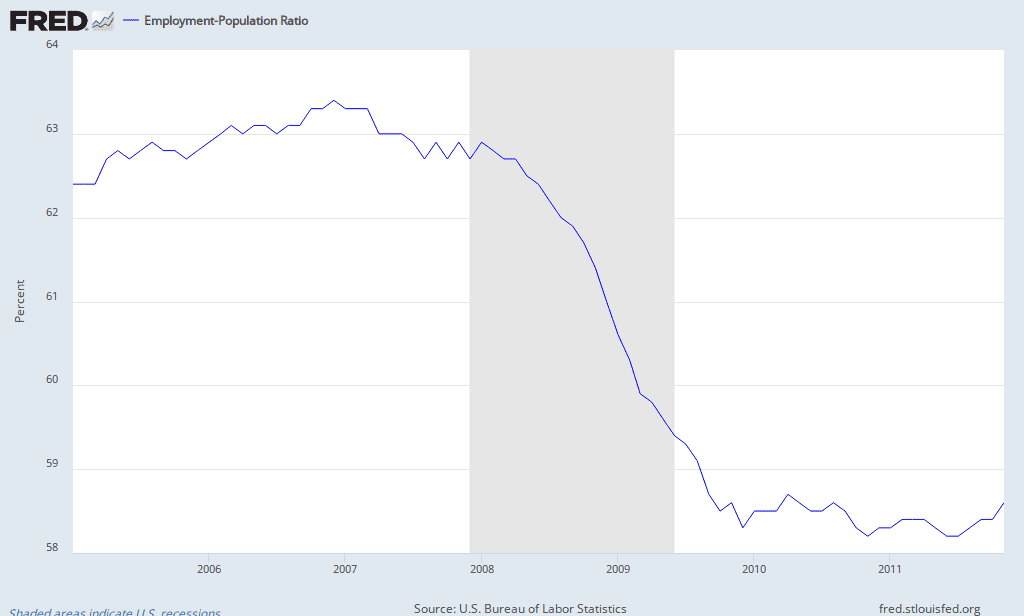hvactec
VIP Member
PORT WASHINGTON N.Y. (MarketWatch) -- Each month, the Bureau of Labor Statistics publishes two measures of employment. Too bad they are telling two different stories.
Is the U.S. economy really slogging through another jobless recovery? Yes, if you look at the payroll data; no if your preferred indicator is the household statistics.
To be sure, the household survey is the source of the widely-followed and politically-sensitive unemployment rate, which, as you know, is high, compared with where it usually was at this point in past recoveries. To the unemployed this is a jobless recovery regardless of what other data might say.
However, the unemployment rate does not give as good a reading on the state of the labor market as the employment data. This is because it can be influenced by the way people answer the governments questions.
For example, in order to be counted as unemployed, an individual has to meet four criteria: (1) be at least 16 years of age; (2) not in school, jail, hospital or the military; (3) be physically able to work; and (4) have looked for a job during the survey period and been unable to find
one.
While there should be no question about the intent of the first three, it is the fourth that raises questions among economists.
This is because the surveyors dont ask how hard the person looked for work (was it every day, once a week, less frequently?), or whether the person turned down an offer because the job was too far from home, below the level and pay of his previous position, or because she didnt like the workspace offered, to name three examples.
In good times, the headline unemployment rate can overstate the degree of joblessness. However, in times like these, it tends to understate the true condition of the labor markets.
It does not adequately count workers who have been out of work for so long that they have become discouraged and thus have stopped looking for work, nor does it accurately measure the underemployed: those who are, indeed, working below their education and/or skill level, and those who would like to work full time but can only find part-time work.
Add in all these disparate groups and todays jobless rate of 8.6% is actually nearly three times higher.
This is why most economists prefer to look at employment because it leaves little doubt: either you are working or youre not.
For data they rely on the payroll numbers, since they are derived from a survey of some 400,000 employers nationwide. By contrast, the household stats are based on a query of only around 60,000 households.
read more A tale of two statistics - Irwin Kellner - MarketWatch
Is the U.S. economy really slogging through another jobless recovery? Yes, if you look at the payroll data; no if your preferred indicator is the household statistics.
To be sure, the household survey is the source of the widely-followed and politically-sensitive unemployment rate, which, as you know, is high, compared with where it usually was at this point in past recoveries. To the unemployed this is a jobless recovery regardless of what other data might say.
However, the unemployment rate does not give as good a reading on the state of the labor market as the employment data. This is because it can be influenced by the way people answer the governments questions.
For example, in order to be counted as unemployed, an individual has to meet four criteria: (1) be at least 16 years of age; (2) not in school, jail, hospital or the military; (3) be physically able to work; and (4) have looked for a job during the survey period and been unable to find
one.
While there should be no question about the intent of the first three, it is the fourth that raises questions among economists.
This is because the surveyors dont ask how hard the person looked for work (was it every day, once a week, less frequently?), or whether the person turned down an offer because the job was too far from home, below the level and pay of his previous position, or because she didnt like the workspace offered, to name three examples.
In good times, the headline unemployment rate can overstate the degree of joblessness. However, in times like these, it tends to understate the true condition of the labor markets.
It does not adequately count workers who have been out of work for so long that they have become discouraged and thus have stopped looking for work, nor does it accurately measure the underemployed: those who are, indeed, working below their education and/or skill level, and those who would like to work full time but can only find part-time work.
Add in all these disparate groups and todays jobless rate of 8.6% is actually nearly three times higher.
This is why most economists prefer to look at employment because it leaves little doubt: either you are working or youre not.
For data they rely on the payroll numbers, since they are derived from a survey of some 400,000 employers nationwide. By contrast, the household stats are based on a query of only around 60,000 households.
read more A tale of two statistics - Irwin Kellner - MarketWatch


